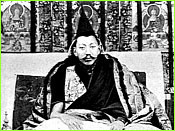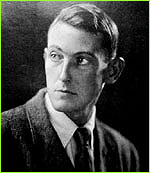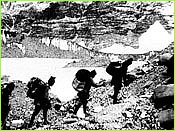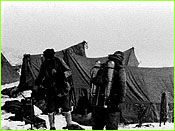

|
 |
 |
Early Everest Attempts: 1921-1938 by Audrey Salkeld In the early years, little was known about the physiological effects of extreme altitude, and mountaineers the world over wondered if they could possibly climb Mount Everest, the world's highest mountain. It was a leap into the world of the unknown, travelling to far off lands and launching huge expeditions up the slopes of the Himalaya to altitudes no human had ever experienced. Eric Shipton, considered the best mountaineer of his day and a veteran of the expeditions to Everest in the 1930s, predicted that Everest would eventually be climbed, although he was quick to qualify his prediction with commentary on the physiological limitations of high altitude mountaineering: "It would seem almost as though there were a cordon drawn round the upper part of these great peaks beyond which no man may go. The truth, of course, lies in the fact that, at altitudes of 25,000 feet and beyond, the effects of low atmospheric pressure upon the human body are so severe that really difficult mountaineering is impossible and the consequences even of a mild storm may be deadly, that nothing but the most perfect conditions of weather and snow offer the slightest chance of success, and that on the last lap of the climb no party is in a position to choose its day."  Around the turn of the twentieth century, the initial problem of
climbing Everest was not one of height or difficulty, but of merely
gaining access to the mountain. Neither Tibet, nor Nepal, across
whose borders Everest straddles, welcomed outsiders. Only through
top level diplomacy and a personal appeal to the Dalai Lama was
permission finally secured for a British reconnaissance party to
visit Tibet in 1921. Their goal was to ascertain if a route to the
summit of Mount Everest could be found. Unlike our Everest Quest
expedition, which is approaching the summit from the south side,
these first explorers approached from the north.
Around the turn of the twentieth century, the initial problem of
climbing Everest was not one of height or difficulty, but of merely
gaining access to the mountain. Neither Tibet, nor Nepal, across
whose borders Everest straddles, welcomed outsiders. Only through
top level diplomacy and a personal appeal to the Dalai Lama was
permission finally secured for a British reconnaissance party to
visit Tibet in 1921. Their goal was to ascertain if a route to the
summit of Mount Everest could be found. Unlike our Everest Quest
expedition, which is approaching the summit from the south side,
these first explorers approached from the north.A small group of seasoned travellers - one or two mountaineers as well as a few naturalists and surveyors - set off from Darjeeling on May 13th of that year under the leadership of Colonel C.K. Howard-Bury, an Irish aristocrat. The expedition's oxygen expert, Dr. A.M. Kellas, who joined the party in India  straight from another strenuous excursion, died of
altitude-aggravated dysentery during the six-week march towards
Everest, and the health of the mountaineering leader, Harold
Raeburn, also broke down. George Leigh Mallory assumed
responsibility for most of the exploration to the north and east of
the mountain.
straight from another strenuous excursion, died of
altitude-aggravated dysentery during the six-week march towards
Everest, and the health of the mountaineering leader, Harold
Raeburn, also broke down. George Leigh Mallory assumed
responsibility for most of the exploration to the north and east of
the mountain. After four months of circling and studying Everest, they were within striking distance of setting foot on the mountain itself. After a cold night's camp near the top of Windy Gap, they set off across the East Rongbuk basin with surveyor Wheeler and some porters towards the slopes of the North Col, and began to climb its icy slopes. A gale was raging on top, whipping snow into whirlwinds of deep snow. They took a few steps into it before being forced back. Still to Mallory's experienced eye, the route ahead from there to the summit looked long, but feasible for a fresher party.  British expeditions, including George Mallory, returned in 1922 and
1924. In '22, George Ingle Finch and Geoffrey Bruce reached the
historic height of over 27,000 feet, using flimsy and cumbersome
oxygen apparatus. But that still left 2,000 feet of altitude and a
full mile of climbing to reach the summit. When a further attempt
was launched by Mallory and others after heavy snowfall, the team
triggered an avalanche from the laden slopes of the North Col. Seven
Sherpa porters were killed and Mallory was devastated with guilt.
British expeditions, including George Mallory, returned in 1922 and
1924. In '22, George Ingle Finch and Geoffrey Bruce reached the
historic height of over 27,000 feet, using flimsy and cumbersome
oxygen apparatus. But that still left 2,000 feet of altitude and a
full mile of climbing to reach the summit. When a further attempt
was launched by Mallory and others after heavy snowfall, the team
triggered an avalanche from the laden slopes of the North Col. Seven
Sherpa porters were killed and Mallory was devastated with guilt.In 1924, British mountaineers Norton and Somervell were able to reach a point at 28,128 ft on the North Face without using artificial oxygen. Their effort was quickly followed by another, when Mallory attempted the final ascent with the youngest member of the team, Oxford University student Andrew (`Sandy') Irvine, following the Northeast Ridge line.  They were climbing with oxygen and were spotted by Noel Odell
towards 1 p.m. on their summit day, surmounting a rocky step on the
ridge and, as Odell recalled, 'going strong for the top.'
They were climbing with oxygen and were spotted by Noel Odell
towards 1 p.m. on their summit day, surmounting a rocky step on the
ridge and, as Odell recalled, 'going strong for the top.'
They were never seen again, and ever since mountaineers have argued where exactly the pair were when Odell saw them, and whether they might actually have reached the summit ahead of Edmund Hillary and Sherpa Tenzing Norgay, the acknowledged first men to reach the top of this formidable mountain. It remains one of climbing's greatest mysteries. After World War II, Tibet was closed to foreigners by the Dalai Lama, and in 1950 Chinese troops marched in. It would be another thirty years before foreign mountaineers would again be allowed to approach Everest through Tibet, and it was at that time that Chinese parties were successful on the route that George Mallory had been unable to complete. Audrey Salkeld of Clevedon, England is one of the world's premier Everest historians and photo researchers. Her photo editing credits include Everest: The Ultimate Book of the Ultimate Mountain and Everest: The Best Writing and Pictures from Seventy Years of Human Endeavour. Lost on Everest | High Exposure | Climb | History & Culture | Earth, Wind, & Ice E-mail | Previous Expeditions | Resources | Site Map | Everest Home Editor's Picks | Previous Sites | Join Us/E-mail | TV/Web Schedule About NOVA | Teachers | Site Map | Shop | Jobs | Search | To print PBS Online | NOVA Online | WGBH © | Updated November 2000 |